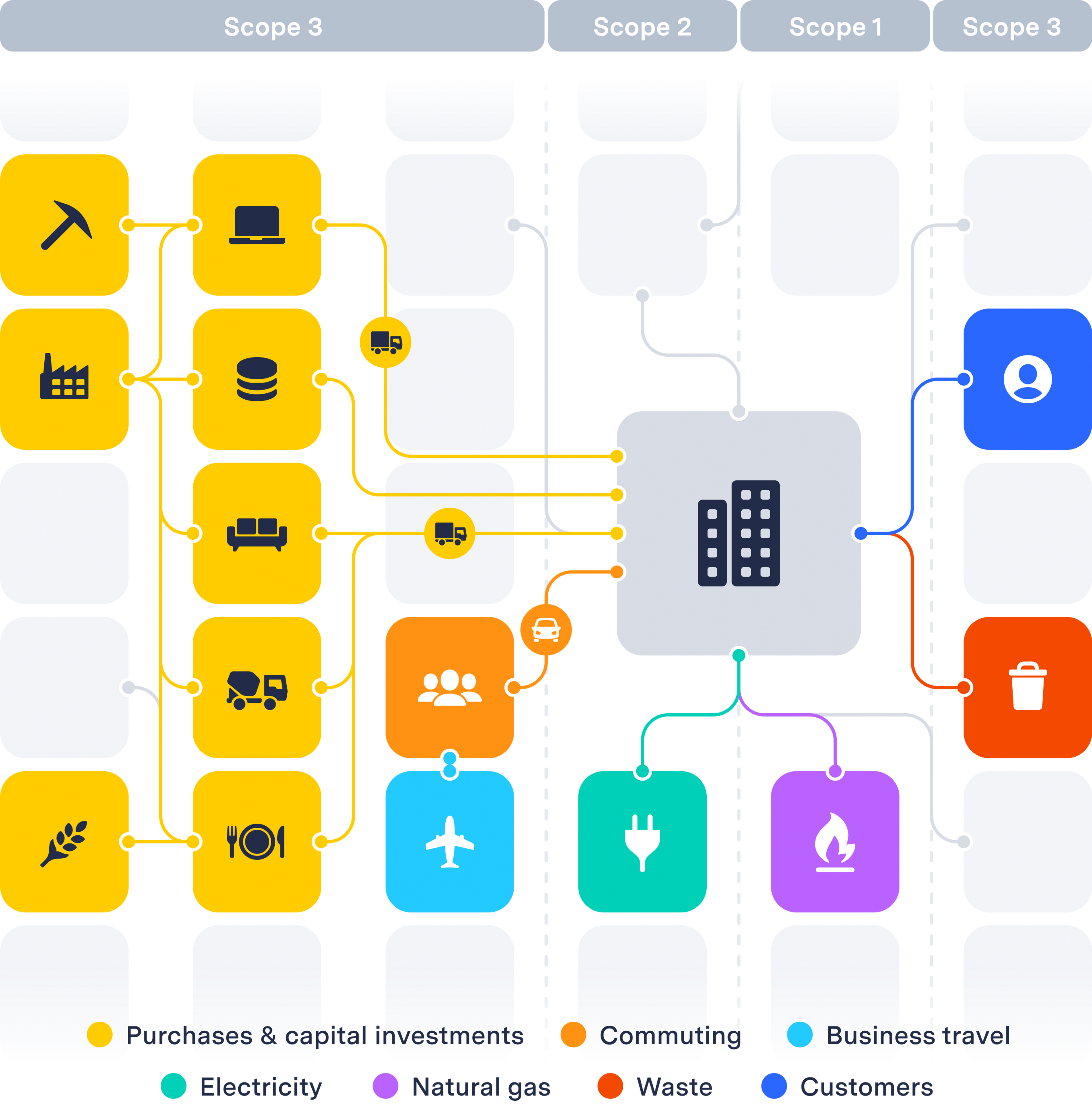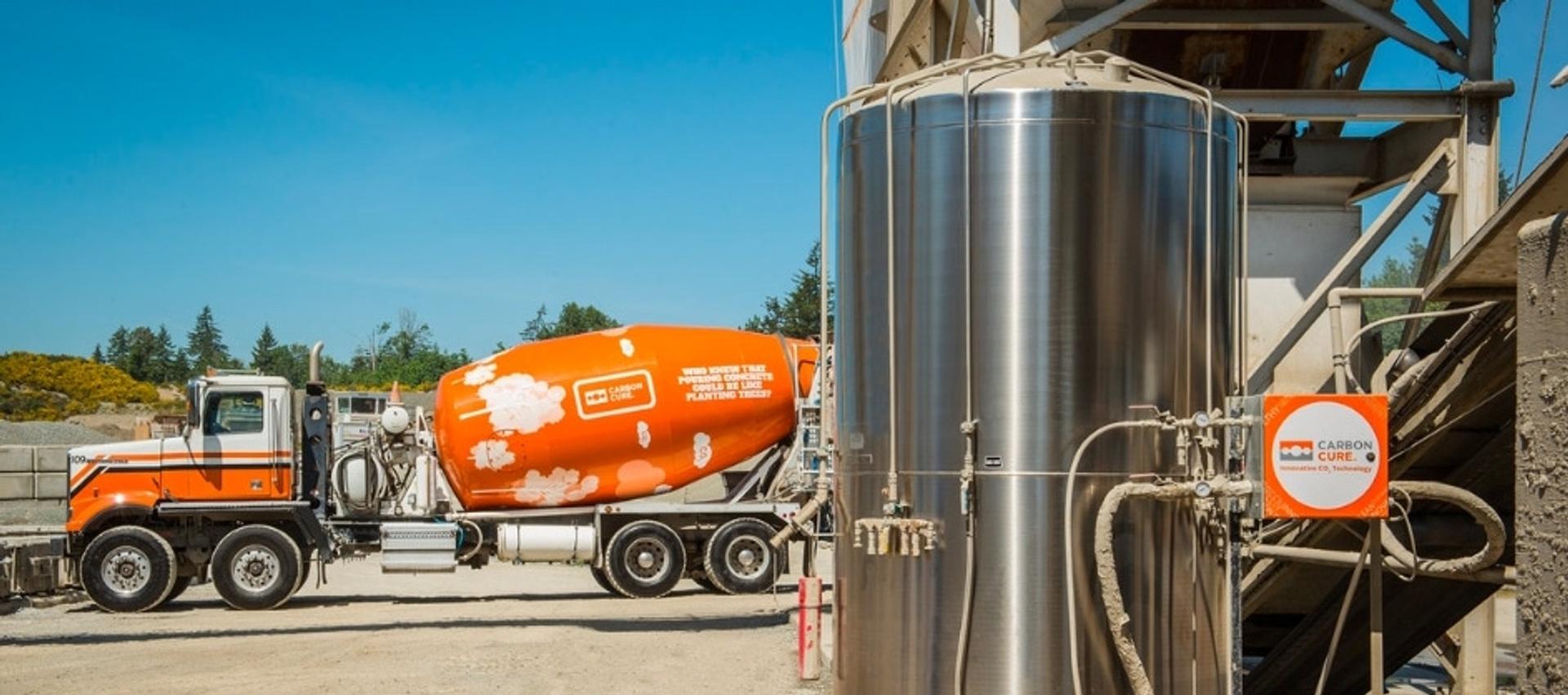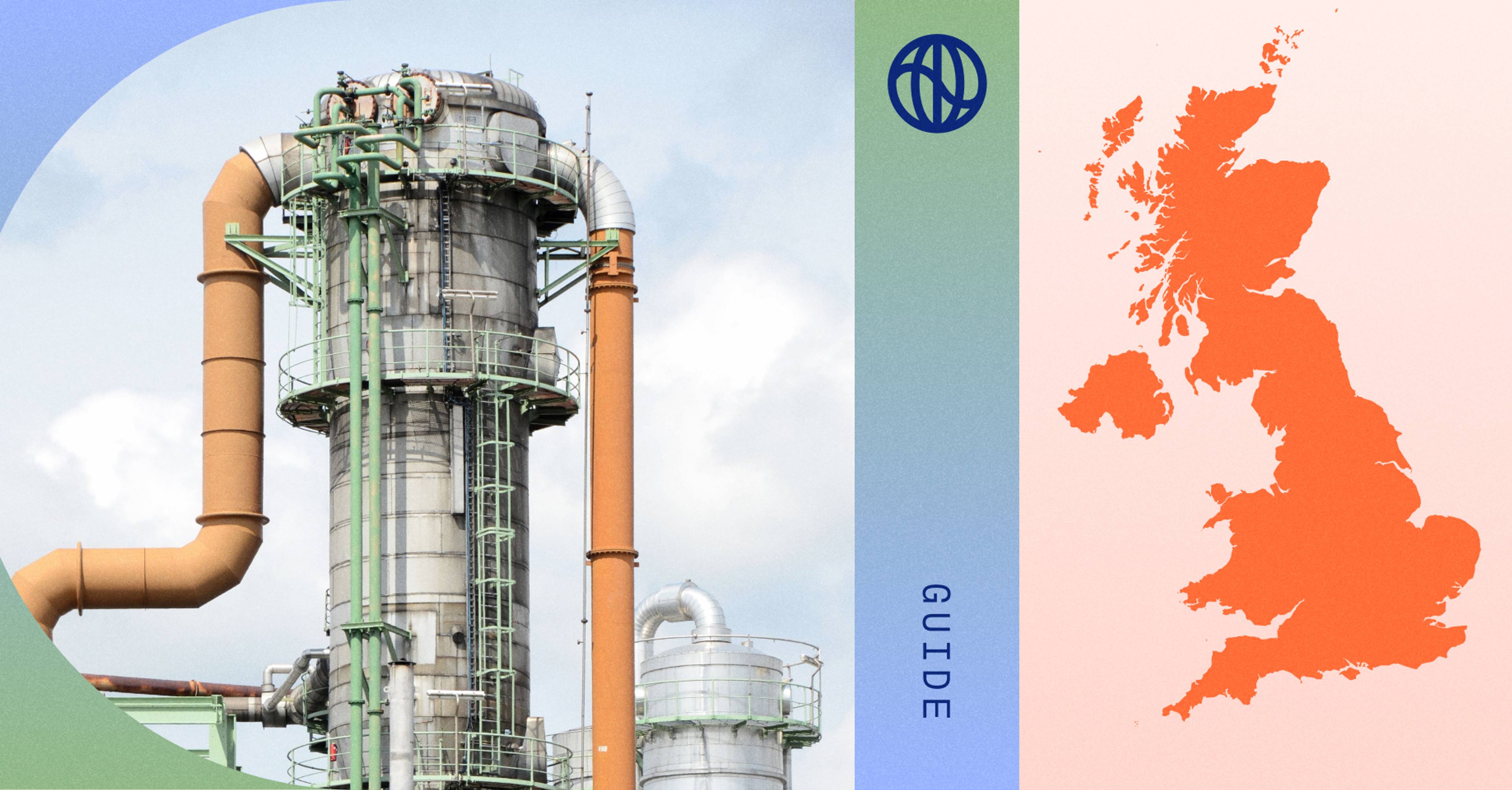To solve climate change, the world needs to get to net zero carbon, fast: drastically cutting emissions from every part of the economy and removing what’s left. Today, we emit 50 gigatonnes of CO2e every year. Scientists tell us we need to reduce that number to net zero by 2050 to avert the worst climate impacts. This is an enormous task.
Companies are critical to this race. Some are leading the way by committing to achieve net zero carbon earlier than 2050. But what does being a net zero business mean? There isn’t yet an agreed-upon standard; in the fervor to get going, some are misusing the term.
We think it’s important to maintain a high bar. Traditional carbon neutrality involves buying offsets for a narrow subset of emissions. True net zero requires measuring the footprint of a company’s entire value chain, reducing carbon as much as possible, and removing the rest. Net zero companies aim to achieve for their own business what the world must accomplish to beat climate change.
This guide is Watershed’s take on the basics—and some thoughts on what sets the best programs apart.
| Carbon neutral | Net zero | |
|---|---|---|
| What emissions are included? | Varies. Many companies offset emissions for Scope 1, 2, and business travel, ignoring most Scope 3 emissions. | Entire footprint, including all of Scope 3 (emissions from suppliers and customers). |
| How much to reduce your footprint? | None required. | Reduce Scope 1-3 emissions as much as possible, in line with Science Based Targets. Requires reductions from suppliers. |
| What to do with remaining emissions? | Buy carbon offsets, which are generally carbon avoidance, paying others not to pollute. | Fund carbon removal, which takes carbon out of the atmosphere. |
How can you achieve net zero?
At Watershed, we look for three minimum criteria in a net zero commitment:
1. Measure your entire footprint—across Scopes 1, 2, and 3
The first step is knowing your footprint. Companies with net zero goals take responsibility for the emissions of their entire value chain—the carbon emitted by the company’s operations, employees, suppliers, and customers. A company’s carbon footprint does not stop at the walls of its factories, stores, and office buildings.
Carbon accountants think about emissions in terms of “scopes.” (For more, see our guide to the Greenhouse Gas Protocol.) For net zero companies, everything is in scope.

Traditional carbon neutral programs focused on Scopes 1 and 2, plus business travel and commuting. But for most companies, Scope 3—“upstream” emissions from the goods and services you buy, and “downstream” emissions from the use of their products—is the most important piece of the puzzle, accounting for 80-90% of emissions. Carbon emitted from the production or use of your product is your carbon.
For example, Apple measures the impact of consumers powering their iPhones, Microsoft takes responsibility for every flight by a consultant or service provider, and sweetgreen counts methane from the dairy farms that supply cheese for its salads.
2. Reduce emissions aggressively—and bring your suppliers along
Net zero programs require radical emissions reductions. But how much is enough?
The Science Based Targets initiative is the gold standard. To set a Science Based Target, a company must reduce its emissions in line with what scientists say is necessary to keep warming below 1.5º C above pre-industrial levels.
The exact reduction formulas get complicated and vary based on the size and sector of the company. But the core idea is simple: do for your own business what is necessary for the larger economy. If every company achieved a Science Based Target, the world would be on track to avert catastrophic climate change.
Net zero companies can only achieve their targets if their suppliers reduce emissions, too. Done right, net zero sparks a virtuous cycle of emissions reductions cascading from company to company. This is beginning to happen: Walmart’s Project Gigaton is working with suppliers to cut a gigaton of emissions by 2030, Apple works with electronics manufacturers to deploy clean power, and Microsoft has added carbon reporting to its supplier code of conduct.
3. Remove any emissions that remain
The top priority is to reduce emissions first. But some sectors (like air travel and heavy industry) will be stubborn to decarbonize. Companies with net zero targets commit to funding the removal of whatever carbon emissions remain in their target year.
The carbon removal demanded by net zero is different from traditional carbon offsets. Most traditional offset projects are carbon avoidance: they pay someone else not to pollute. So, for example, you might pay a fertilizer plant to install equipment that destroys nitrous oxide before it’s released or pay a landowner not to burn a forest. This is good—less carbon is emitted—but it doesn’t remove any of the carbon that’s already in the atmosphere. We can’t offset our way to true net zero.
By contrast, carbon removal takes carbon out of the atmosphere and securely stores it. These projects come in two broad families: “natural solutions” that sequester carbon in plants and soils (e.g. by planting trees or enhancing soil carbon sequestration, more on this below) and “technological solutions” that store carbon outside of the biosphere (e.g. direct air capture and bio-oil sequestration). Both are necessary for the world to achieve net zero.
Climate models agree that the world will need to remove upwards of 10 gigatonnes of CO2 from the atmosphere per year by 2050, requiring hundreds of billions of dollars of carbon removal funding by 2050. [At $10 per tonne, removing 10 gigatonnes will cost $100B per year. At $100 per tonne, it will cost $1T per year.] Companies will be a key contributor to this funding.
A company’s removal spending should ramp up linearly until it compensates for all emissions in the net zero target year. This gradual ramp will help these projects scale: we need to deploy carbon removal now so that it’s broadly accessible and affordable by 2030, 2040, and 2050.
Removal shouldn’t be an excuse to skip the hard work of reducing emissions first. According to recent guidance from SBTi: “Companies may reach a balance between emissions and removals before they reach the depth of decarbonization required to limit warming to 1.5ºC. While this represents a transient state of net-zero emissions, it is expected that companies will continue their decarbonisation journey until reaching a level of abatement that is consistent with 1.5ºC pathways.” We agree.
What does high-impact net zero look like?
We’ve described the net zero baseline. How do the most ambitious net zero programs differ? We’ve seen three things that set climate leaders apart:
1. Have a transparent plan and start executing now
High-impact net zero programs start driving down carbon the moment they’re announced. Write a detailed plan for what you’ll do, in what order, to start reducing emissions. The more detail the better: include plans for your suppliers, technologies, products, and owners.
Interim targets are essential. Work backwards from net zero to set iterative, annual benchmarks and commit to reporting progress publicly. Bringing down emissions every year isn’t easy, but it’s the only way a net zero program can work: step by step. Be ambitious about each year’s benchmarks. Companies can’t wait until 2029 to start work on their 2030 goal.
The most ambitious programs we’ve seen publish their carbon graph and show its trajectory over time. Microsoft’s recent sustainability report is an excellent example.
2. Stay ahead of schedule
The world needs to get to net zero carbon by 2050. Companies that want to lead on climate change should set goals to get there faster. Ambitious companies (like Microsoft, Apple, and Square) are shooting for 2030. Others (including Amazon and signatories to The Climate Pledge) aim for 2040. The faster the better.
3. Become a market-maker for carbon removal
Carbon removal is the most contentious part of the net zero equation. What counts as carbon removal? How much should a company spend? On which projects? If you’re aiming to get to zero by 2030, what removal should you fund in 2021? It’s critical we get this right so that true carbon removal can be distinguished from low-impact offsets.
If carbon removal is going to scale to the 10 Gt of CO2e per year we’ll need by 2050, we need to start ramping capacity and reducing costs now. The best net zero programs fund carbon removal at today’s high prices in order to make the technology accessible to more companies over time. They’re thinking beyond lowest-cost options and instead becoming market makers, with a particular focus on early-stage, cutting-edge projects.
Companies have a few choices to make:
- Projects. Companies should fund a carbon removal portfolio—a mix of bets that, together, optimize for long-term impact. Stripe’s Nan Ransohoff has put it well: “Today, the field has a major top of funnel problem; there are far too few attempts to build carbon removal solutions that have potential to be high volume, low-cost and permanent.” Companies can help solve this problem by creating demand for approaches that are promising, but currently unproven or expensive. Stripe and Shopify have led the way on investing in these projects, funding bio-oil sequestration, direct air capture, sequestration in cement, and other ideas.
- Price. The higher the carbon price, the better. Economists estimate the true cost of carbon to be in the range of $100 per tonne of CO2e. A small set of corporate leaders like Swiss Re have adopted this number as the price they’ll pay for carbon removal. As a lower bound, reforestation projects cost roughly $15 per tonne. We believe smaller portfolios at higher price-points can be more impactful than larger portfolios of low-cost solutions.
- Volume. How much to fund? Spending should ramp linearly: if you’re aiming to get to net zero by 2030, remove 10% of your footprint in 2021, 20% in 2022, and so on, until all emissions are removed by the target year. In the near-term, the amount of funding matters more than the tonnes removed: high-impact programs may fund a small tonnage of expensive early-stage projects to help them scale and reduce costs over time.
Fortunately, carbon removal pioneers are sharing what they’re learning in order to advance the ecosystem. Three particularly good resources:
- Shopify’s playbook for purchasing carbon removal
- Stripe’s first carbon removal purchases
- Microsoft’s white paper on purchasing 1.3 million tCO2e of carbon removal

4. Advocate for net zero policies
Net zero is about accelerating a zero carbon future for everyone. Government policy is the essential lever for decarbonizing the economy, and businesses have power to shape it. Companies that have set their own net zero targets are particularly effective messengers: they show that a zero carbon economy is possible today—and is good for business. The best net zero leaders jump into the fray of policy debates and advocate for legislation and regulation—from Congress to city hall—that cut carbon emissions dramatically.
ClimateVoice is a great resource for climate policy engagement (especially for technology companies).
The importance of net zero
Fundamentally, net zero is not an accounting exercise—it’s an imperative to think big on climate. Net zero companies look beyond the areas they directly control and accelerate decarbonization for everyone: by engaging with suppliers, deploying carbon removal, and advocating for smart climate policy. If every company achieved net zero, the world would too. And if leading companies get there decades ahead of schedule, we can bend the carbon curve faster.












